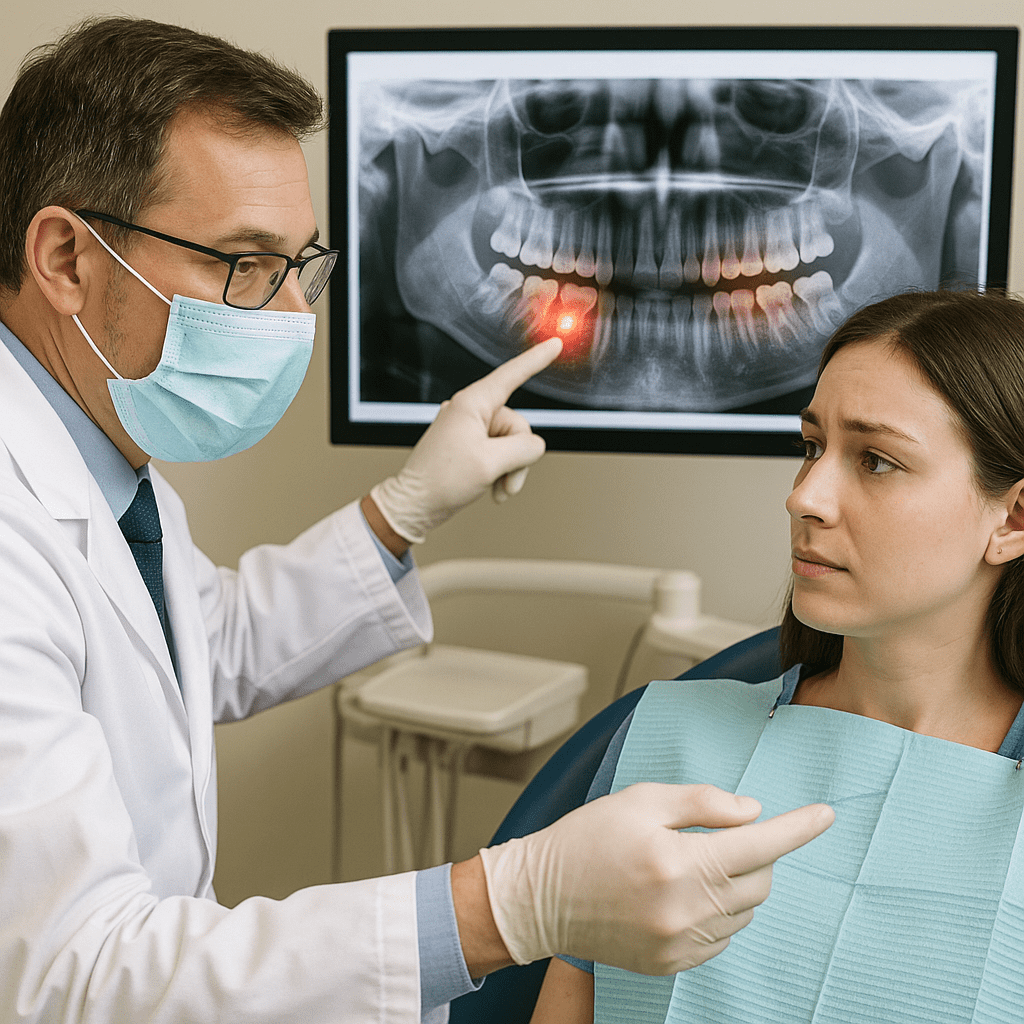Signs You Might Need a Tooth Extraction
Tooth extractions can seem daunting, but sometimes they’re the best choice for your oral health. Recognising the signs you might need a tooth extraction is key to avoiding bigger problems and ensuring your smile stays healthy.
In this blog, we’ll cover the reasons for tooth extraction, the signs of tooth infection, common tooth extraction symptoms, and what to expect before and after the tooth removal procedure.
Why Tooth Extractions Are Sometimes Needed

Dentists always aim to save your natural teeth whenever possible. But there are situations when a tooth extraction becomes the best or only option to protect your oral health. Common reasons for tooth extraction include:
- Severe tooth decay that’s beyond repair
- Advanced gum disease causing tooth loosening
- Dental infection or abscess that can’t be treated with a root canal
- Overcrowding in the mouth, often in preparation for orthodontic work
- Wisdom teeth extraction due to impaction or lack of space
By understanding these reasons for tooth extraction, you’ll be better prepared if your dentist recommends removing a tooth.

Common Signs You Might Need a Tooth Extraction
Here are some of the most important tooth extraction symptoms and warning signs to watch for:
1. Severe Tooth Pain
Severe tooth pain treatment often involves evaluating whether the tooth can be saved or needs to be removed. If you have constant, sharp pain that isn’t relieved by over-the-counter medication, it may be a sign that tooth extraction is needed.
2. Visible Tooth Decay or Damage
If your tooth is badly decayed, cracked, or broken, a filling or crown may not be enough. When a tooth’s structure is compromised, an extraction might be the only way to avoid further damage.
3. Swelling and Signs of Tooth Infection
Swelling in your face, gums, or jaw, combined with severe tooth pain, can be a sign of a serious tooth infection or dental abscess. If left untreated, this infection can spread, making tooth removal crucial to your health.
4. Loose or Shifting Teeth
Teeth that feel loose are often a sign of advanced gum disease. When gums and bone can’t support the tooth properly, removing the tooth may be necessary to prevent more serious dental issues.
5. Impacted or Problematic Wisdom Teeth
Wisdom teeth extraction is one of the most common tooth extraction procedures. Impacted wisdom teeth can cause pain, swelling, and infection. Removing them can protect your oral health and prevent crowding.
When Do You Need a Tooth Extraction?
So, when do you need a tooth extraction? It depends on how advanced the problem is and whether other treatments—like fillings or root canals—are possible. Here’s when you should see your dentist:
- Constant or worsening tooth pain
- Swelling or infection that doesn’t go away
- Crowding or shifting of teeth
- Visible signs of decay or damage
- Recurring issues with wisdom teeth
Your dentist will do a thorough evaluation to determine if a tooth extraction is needed.
What to Expect During the Tooth Removal Procedure
The tooth removal procedure is simpler and more comfortable than most people expect. It usually involves two main types:
- Simple extraction: For teeth that are fully visible in the mouth, your dentist uses instruments to gently loosen and remove the tooth.
- Surgical extraction: If the tooth is impacted (like many wisdom teeth) or broken below the gumline, your dentist will make a small incision in the gum to access and remove the tooth.
Your dentist will numb the area with local anaesthetic so you don’t feel pain. In some cases, sedation is offered to help you relax.
Tooth Extraction Aftercare
After your tooth removal procedure, proper tooth extraction aftercare is essential to promote healing and avoid complications. Here’s what to do:
- Bite down on gauze to stop bleeding and help a blood clot form
- Apply cold compresses to reduce swelling
- Eat soft foods and avoid chewing near the extraction site
- Avoid smoking or using straws for at least 24 hours to prevent dry socket
- Take any prescribed medication as directed
- Keep the area clean by gently rinsing with warm salt water after 24 hours
Most people recover within a few days, but if you experience severe tooth pain that doesn’t improve, excessive bleeding, or signs of infection, contact your dentist right away.
Recognising the signs you might need a tooth extraction is crucial for your dental health. If you have severe tooth pain, signs of tooth infection, or other concerning tooth extraction symptoms, don’t wait—see your dentist for a thorough evaluation.
Modern tooth removal procedures are safe and comfortable, and with good tooth extraction aftercare, you can heal quickly and maintain a healthy smile.
If you’re worried you might need a tooth extraction or are experiencing dental pain, book an appointment with your dentist today to protect your oral health.
 Call
Call 


